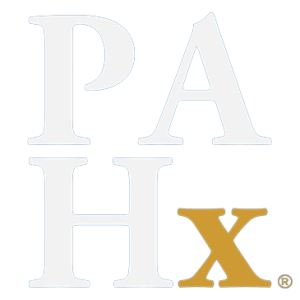In the fall of 1971, John P. Hubbard, MD, President of the National Board of Medical Examiners, listened intently as members of the ad-hoc Goals and Priorities Committee of the NBME advocated that the Board develop a certifying examination for physician assistants. Never before had the NBME examined any health professionals other than physicians. When the recommendation of the committee was adopted by the Board in March of 1972, Hubbard was prepared to pursue the project with his usual vigor. He promptly appointed a “Special Study Committee” that drew upon the leadership of the physician assistant concept from its inception in 1965. He named Barbara J. Andrew, PhD, to direct the project. As a first step, a “role delineation study” was undertaken to define the knowledge and tasks that a physician assistant would be expected to have mastered. Based upon that assessment, test committees were appointed, and a date set for administration of the first certifying examination in December of 1973.
When detailed plans for administration of the examination were unveiled at the First Annual Conference on New Health Practitioners in Wichita Falls, Texas in April of 1973 — in the presence of representatives of the American Medical Association, and the Federation of State Medical Boards — the work, and the enthusiastic support of Dr. Hubbard and his staff, were met by the physician assistant community with a standing ovation.
Now in his mid-70’s, John Hubbard had been a pioneer during all of his professional life. Born in 1903, he obtained his medical education at Harvard Medical School, and pediatric training at Boston’s Children’s Hospital where he remained for a number of years. Specializing in pediatric cardiology, he became an authority on rheumatic fever, ultimately publishing the definitive recommendations for prevention and treatment of the disease.
His most significant clinical accomplishment came in 1938, when he persuaded renowned thoracic surgeon, Robert E. Gross, MD, to open the chest, and ligate a hemodynamically significant patent ductus artrtiosus in a seven year old child. Although first theoretically proposed in 1907, the procedure had never been successfully performed. The operation is the first known repair of a congenital heart defect that would have inevitably proved fatal. An American Heart Association lifetime achievement award in 1966 noted that Hubbard provided “the key which unlocked the door to cardiac surgery.”
Dr. Hubbard entered military service during World War II, serving as Chief of Public Health for the military mission in Denmark. Following the war, he directed a nationwide study of child health services and pediatric education throughout the United States. Funded by the United States Public Health Service, the study earned a Lasker Award for the American Academy of Pediatrics in 1949.
In 1950 Dr. Hubbard moved to Philadelphia where he became Professor of Preventive Medicine and Public Health at the University of Pennsylvania. At the same time, he was asked by the National Board of Medical Examiners to become its Executive Director and Treasurer — at the time, a part time position.
Dr. Hubbard transformed the NBME. From its inception in 1915, the Board had used essay questions to test the knowledge of students during their education, and oral examinations at its conclusion. By mid-century, however, psychometricians began favoring objective, “multiple-choice” examinations which they deemed more reliable, had the advantage of sampling a wider scope of knowledge, and were far less costly, since they were “machine-scorable.” Hubbard engaged Educational Testing Service to conduct a three year study of the relative advantage of the two forms of examination. In 1954 the NBME abandoned essay testing, converting to multiple-choice testing for all of its certifying examinations.
In subsequent years, John Hubbard, now the full time chief executive officer, led the NBME in expanding its services to others. The first of these efforts was an examination that would be used by the Educational Council on Foreign Medical Graduates (ECFMG) to test the readiness of foreign students to enter residency training in the United States. This was followed by the Federation Licensing Examination (FLEX), developed in partnership with the Federation of State Medical Boards. It was an examination that could be used by state licensing authorities in lieu of their own examinations. FLEX quickly spread among the states until it became universal. With expanded psychometric capability. the NBME then began providing services to medical specialty boards. At the same time, a research effort by staff at the Board conclusively demonstrated that the venerated “oral examination,” widely used by specialty boards and the NBME itself, was highly unreliable. It was soon abandoned by the NBME and most of the medical specialties.
The appointment of the Goals and Priorities Committee in 1970 signaled the NBME willingness to expand its horizons beyond physician education. The physician assistant certifying examination was the first of these ventures. It was to be the last of Dr. Hubbard’s major projects. He retired from the Presidency of the NBME in 1974. He then assumed a new role as President of the College of Physicians of Philadelphia, establishing, in the process, a Division of the History of Medicine.
John Hubbard passed away in 1990. His lifetime of accomplishments had changed the face of testing and measurement in the medical sciences forever.
Acknowledgments: This biography was written by Thomas E. Piemme, MD, and was submitted to the Society in August 2012. Portrait used in banner taken from the John P. Hubbard Award website.
When using information from this biography, please provide the proper citation as described within the PA History Society Terms of Use.



